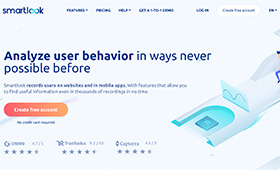6 Web Design Blunders to Avoid
When it comes to web design, details matter. It’s the small things about a website that attracts and repels visitors. If you’re trying to improve the user experience your website offers, there are a few things you probably shouldn’t do in terms of design. Seemingly inconsequential design mistakes can cost you. Make sure you avoid these six web design blunders to ensure your website provides a positive user experience:
1. Forgetting the logo
Your logo is one of your most basic branding tools. Having one gives you credibility and adds an important personal touch to your website. While web users might not notice the absence of a logo on a site, they’re generally more likely to trust the authority of a site that has one. Everything you do to effectively brand yourself, including using a logo, increases your ostensible credibility. Stamping your tasteful logo in one of the corners at the top of your website is essential. Just make sure the logo isn’t too big and doesn’t call too much attention to itself in any other way.
Businessweek suggests trying out angular fonts in your logo if you’re trying to appeal to a Western audience and rounded fonts in your logo if you’re trying to appeal to an Eastern audience. Research suggests that how people respond to particular logos often depends on their cultural background. Additionally, researchers at West Virginia University, Rice University, and Texas A&M University discovered that people often react strongly to logo changes. If you decide to change your logo, make sure you do so with care.
2. Going overboard with text
This is probably the #1 rule of web design 101 and the second point in the list of web design blunders. Web users simply don’t like tons of text crammed on a web page. They will leave a web page if it’s too overloaded with text. Your content efforts are important for various reasons. A site without high quality content that’s search engine optimized simply won’t rank as well in the SERPs. However, it’s absolutely crucial that you spread your content out on numerous web pages and avoid overdoing it with text on any of your web pages. It’s also important that you make your text easy-to-read with things like headers and bulleted lists.
3. Neglecting to take advantage of custom search options
Your site should be easy for users to navigate. One simple thing you can do to make your site easier to navigate is to install a custom search box. Google, good search, and a number of other online entities offer custom search boxes you can add on to your website. These search boxes let people use key terms to search for specific content on your site. Web users are impatient, and they’re a lot more likely to get frustrated if they can’t find what they need.
4. Getting too colorful
Take a look at the color schemes on some of the most successful sites: Google, Facebook, Craigslist, Wikipedia, etc. The most successful websites only make use of a few different colors, and they only make use of simple fonts. They don’t call too much attention to themselves. They’re simply good at serving whatever purpose they serve, and their web design doesn’t distract users in any way. Make sure you pick an easy-to-read font and a simple color scheme for your site. Loud colors and excessive use of too many colors should be avoided.
5. Linking too infrequently
On each of the pages of your website you should, at the very least, link to your home page. Additionally, it’s a good idea to include links to your main web pages at the top or along the left-hand side of each of your pages. Just as a search box helps visitors navigate your site, so does having links to your main pages on each of your web pages.
You may also want to consider selectively linking to parts of your website throughout your written web content, particularly in your blog entries (if you have a blog). The more opportunities you give web users to discover new content from you, the better. Just keep what you link to relevant and avoid overloading your web pages with links. If what you’re doing seems excessive, it probably is.
6. Being unnecessarily flashy
Just as you shouldn’t paint your website with all the colors of the rainbow, you probably shouldn’t use too much flash either. Websites that used a lot of flash were popular eight years ago, but they’re a lot less common now for a variety of reasons. Flash sites are more prone to crashing and are often less user-friendly. You can’t, for instance, load flash sites on iOS devices, and you can’t do simple, important things like open links in new tabs on flash sites. A few elements of flash on your site won’t hurt, but try not to be excessively flashy.
Keep these web design blunders in mind as you continue to make your website more appealing to visitors, and remember that less is usually more if you want to deliver a good user experience.










Very useful points!! I was using flash on my website. here after surely I will try to avoid these things..